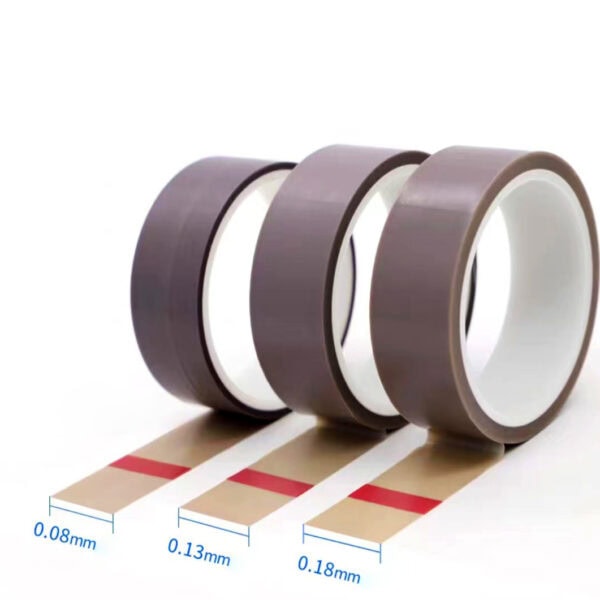Many people use duct tape when they should use masking tape or packaging tape. Using the wrong tape will make your project look bad and waste materials.
Duct tape is stronger and waterproof. You use duct tape for things. Masking tape is easy to remove. You use it when you paint. Packaging tape is strong. You use it to seal boxes when you ship them.
We’re going to look at the differences between the three in terms of what you would use them for and how strong they are.

Composition and Materials
Duct tape is made from a fabric scrim layer that adds strength, coated with polyethylene for durability. This makes it suitable for heavy-duty tasks, especially in environments where flexibility and strength are required. In contrast, masking tape is paper-based, making it easy to tear by hand.
Its light adhesive ensures it can be removed without damaging surfaces, making it perfect for painting and crafting. Packaging tape, often made of polypropylene backing, features a pressure-sensitive adhesive that bonds strongly to cardboard and is commonly used in shipping and storage.
Strength and Durability
Duct tape stands out for its strength and durability. It is waterproof, resistant to wear, and designed for heavy-duty applications such as repair work. Masking tape, however, is not as strong, designed primarily for short-term use. It’s ideal for applications like painting, where easy removal is necessary.
Packaging tape is specifically engineered for sealing boxes and packaging materials. While strong in adhesion to cardboard, it lacks the rugged durability of duct tape, making it unsuitable for repairs or harsh environmental conditions.
Adhesion and Removal
Duct tape has a very strong adhesive, making it perfect for long-term use, but it can leave behind sticky residue when removed. This is one reason why it’s often avoided for temporary tasks like painting. Masking tape, on the other hand, is designed to be easily removable without leaving any residue, which makes it the go-to option for projects that require clean finishes, like painting. Packaging tape is designed to bond quickly and securely to cardboard surfaces. While effective for sealing boxes, it’s not as versatile for other uses.
Typical Applications
Duct tape is incredibly versatile, used for tasks ranging from general repairs to bundling and patching. It’s commonly seen in industries requiring strong temporary fixes or reinforcements. Masking tape, in contrast, is widely used in painting, where its low tack and ease of removal are key features.
It’s also useful in light-duty applications like labeling or protecting surfaces. Packaging tape is most commonly used in shipping and logistics, ensuring that boxes remain sealed during transportation. If you’re looking for heavy-duty labeling solutions, like those found in Flag Labeling Machines, packaging tape may not be suitable for such tasks.
Water Resistance
Duct tape is notably water-resistant, making it ideal for outdoor repairs or applications where moisture might be present. This is why it’s commonly used in emergency repairs on outdoor equipment, boats, and even plumbing. Masking tape, on the other hand, does not offer any water resistance and will easily fail in wet conditions. Packaging tape offers some water resistance but is primarily designed for dry environments, such as warehouses or transportation trucks.
Flexibility and Conformity
Duct tape is known for its flexibility and ability to conform to irregular surfaces, thanks to its cloth backing. This makes it useful for patching leaks or securing objects with unusual shapes. Masking tape is more rigid and works best on smooth, flat surfaces, such as walls or furniture during painting projects. Packaging tape, being thinner and stiffer, is primarily suited for securing flat surfaces like cardboard boxes.
Temperature Resistance
Duct tape can withstand a wide range of temperatures, making it useful in both hot and cold environments. It’s often used in industrial settings, like repairs in automotive or HVAC systems. Masking tape is designed to withstand moderate temperatures but can degrade in very hot or cold conditions. Packaging tape typically performs well in standard shipping environments but can lose its adhesive strength in extreme temperatures.
Common Misuses
One common misuse of duct tape is in electrical repairs. While strong and versatile, duct tape is not suitable for insulating electrical wiring and could lead to hazardous situations. Masking tape is sometimes misused for packaging purposes, but it does not have the strength needed to keep boxes securely sealed. Packaging tape can be misapplied in repair scenarios where it lacks the flexibility and durability of duct tape, leading to quick degradation.
Cost
Duct tape is relatively expensive compared to masking and packaging tapes due to its versatility and strength. Masking tape, being lightweight and designed for single-use applications, is more affordable. Packaging tape, especially when bought in bulk, is the most cost-effective of the three, primarily because it’s used in large quantities in industries such as shipping and logistics.
Environmental Impact
Duct tape, with its plastic and adhesive components, is non-recyclable, which makes it less eco-friendly compared to other options. Masking tape, especially those made from paper, is easier to recycle and is a more environmentally friendly choice for single-use applications. Packaging tape is also difficult to recycle due to its adhesive, but there are eco-friendly options available that use biodegradable materials.
Conclusion
Understanding the differences between duct, masking, and packaging tapes ensures you select the right one for each task, preventing project failures.









